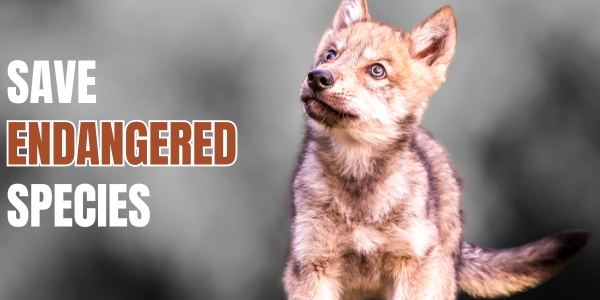Photo credit: Daniela Roth, FWS
Frisco clover (Trifolium friscanum) | ESA status: candidate for listing
Frisco clover
The hardy Frisco clover grows high in the mountains of Utah, but encroaching mining could spell the end for this tough little plant.
Frisco clover habitat
Frisco clover grows in five small populations between 5,640 and 8,440 feet in the San Francisco Mountains, Beaver Lake Mountains, and Wah Wah Mountains in Utah. No other populations have been found, despite surveys of nearby mountain ranges.
This hardy species grows only in shallow, gravelly soil amid sparsely vegetated pinion-juniper-sagebrush communities. To survive in this harsh environment, the plant produces a deep taproot, thick woody stem, and silver leaves covered with fine hairs. The hairs are a common water-retaining adaptation among plants in xeric habitats. Frisco clover form short mats and their reddish-purple blooms resemble those of other clover species. Very little is known about their life history.
What are the threats to Frisco clover?
Mining
The two largest populations of Frisco clover, comprising 71 percent of the estimated total, occur in the San Francisco Mountains. Unfortunately, this is also an area with a long history of mining. Copper, zinc, and silver mines are found throughout these mountains. Many are defunct, but several are active within Frisco clover habitat, and exploration continues. The U.S. Fish and Wildlife Service expects that mining is likely to occur again at historic sites. Gravel mining is also expected to increase in the future. Most gravel pits are smaller than the five-acre threshold required for environmental permitting, but even if an environmental impact assessment was completed for any of the pits, existing laws would only recommend measures for the species’ protection.
Mining is tough on plants. It removes soil, increasing erosion; fragments habitat through road construction; degrades suitable habitat; and perpetuates invasive plants. Activities associated with mining can also crush and kill Frisco clover; reduce plant health; reduce reproductive potential from heavy dust deposits, thereby reducing the quantity and quality of the seedbank; and decrease the pollinator population.
Invasive species
In addition to mining, invasive plants are making life harder for the Frisco clover. Invasive plants can outcompete natives for space and nutrients and disrupt pollinator behavior. Even more damaging, invasives can alter the natural fire regime, often fueling larger, hotter, more destructive wildfires than occurred historically. Frisco clover usually grows alone; if its gravelly soils are invaded by non-native plants, more frequent fires may be able to reach the formerly isolated plants, which are not likely to be able to recover.
What WildEarth Guardians is doing to preserve the Frisco clover
With its small range, limited distribution, and vulnerability to many threats, this species seems a perfect candidate for legal protection. But there no laws that protect the plant on private, state, or Tribal lands in Utah. We petitioned the U.S. Fish and Wildlife Service to protect this rare plant under the Endangered Species Act (ESA) in 2007. ESA protection may be its last, best hope. WildEarth Guardians is working to see this species listed, along with other imperiled Utah plants.
Historical Significant Actions
Wildlife Press: Frisco clover
Three Utah Plants Take Spots in Federal Waiting Line
Plants First Recognized To Be In Trouble in the 1980s
Contact: Nicole Rosmarino 303-573-4898 x1163
